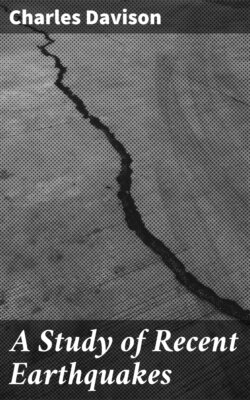Читать книгу A Study of Recent Earthquakes - Charles Davison - Страница 22
На сайте Литреса книга снята с продажи.
MINOR SHOCKS.
ОглавлениеA great earthquake rarely, if ever, occurs without some preparation in the form of a marked increase of seismic activity. Perrey records several shocks during the two years 1856–57 that were felt at places as far apart as Naples, Melfi, and Cosenza. On December 7th, 1857, a slight shock, with a report from beneath like the explosion of a mine, was felt at Potenza. Then came the great earthquake on December 16th, at about 10 P.M.
This was followed by numerous after-shocks—how numerous it is impossible to say, for the records are of the scantiest description. For some hours the ground within the meizoseismal area is said to have trembled almost incessantly. At Potenza many slight shocks, both vertical and horizontal, were felt during the night, and for a month or more they were so frequent as to render enumeration difficult. Mallet's last record is dated March 23rd, 1858, when four slight shocks were felt at La Sala and Potenza, but occasional tremors were reported to him until May 1859.
The most important of all these after-shocks was one felt about an hour after the principal earthquake. Everywhere far less powerful, it was yet strong enough to shake down many buildings at Polla that had been shattered by the great shock. Towards the south at Moliterno, and towards the north at Oliveto and Barielle, it evidently attracted very little attention. So far as can be judged from the evidence given by Mallet, the disturbed area seems to have been approximately of the same form and dimensions as the meizoseismal area, and elongated in the same direction, but concentric with the north-west focus.
On the other hand, if we may rely on too brief evidence, several after-shocks recorded only at Montemurro, Saponara, Viggiano, or Lagonegro, were probably connected with the south-east or Montemurro focus.
